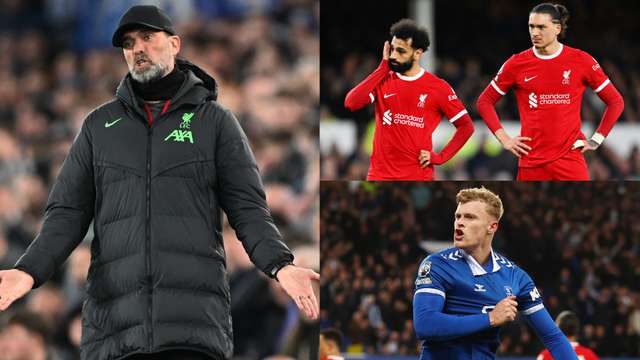As we spend the fallow days looking back on the group stages of Euro 2020, it’s worth remembering to take every conclusion with a pinch of salt.
The first half of an international tournament is all about surviving unscathed. The second half is when the proactivity begins.
Ironically, from a tactical perspective, this appears to play out in reverse. For tournament favourites, the groups are defined by attempts to break down a low block, leading to a more progressive approach or, in England’s case, a collective groan at the lack of proactive football.
But once the sudden death of the knockouts begins, conservatism – risk-averse tactics that hold steady and wait for counterattacking moments – takes over in tense contests between evenly matched sides.
This has been the prevailing logic for decades, such is the lack of time international managers have to coach the intricate details of high pressing and furious positional rotation.
That sort of thing can work in explosive bursts against mid-level opponents in round one – step forward Italy and Spain – but is an approach likely to be exposed against higher-quality nations able to evade the press and break into the huge open spaces left in behind.
It is why Gareth Southgate has been open about following the examples of Portugal and France, justifying a slow-burn beginning to Euro 2020.
He may yet be proved right because, as the tactical landscape of the tournament flips on its head from Saturday, England’s aesthetic stance could prove to be the correct one to take.
But there have been signs of a distinctive tactical progression at Euro 2020 that perhaps complicates Southgate’s careful preparation.
Wing-backs have come to the fore for attacking and defensive teams alike, helping to redefine the role within international football.
It is a natural evolution: wing-backs have become an increasing source of creativity in European football, so it should come as no surprise that this is playing out on the international stage as well.
At Euro 2020 so far, seven of the top 20 players for expected assists are wing-backs/full-backs. They account for 24 per cent of the total assists (13 of 61), four of the top five crossers, and six of the 16 players who have made three key passes or more.
 Getty/Goal
Getty/Goal
Wing-backs have most obviously been effective for high-pressing attacking teams, hinting at the possibility of this tactical style remaining unexpectedly prevalent into the knockouts.
Belgium, Netherlands and Germany have brought three-man defences back into fashion and, inevitably, that means creative pressure passed to the wing-backs.
Denzel Dumfries has lit up the group stages, scoring twice, Thomas Meunier has a goal and an assist to his name, and Germany’s Robin Gosens tore Portugal apart.
Spain haven’t used wing-backs but have used Jordi Alba as a (very) attacking left-back, the Barcelona man helping to define their high-quality displays in the final third.
He ranks in the tournament top ten for expected assists and key passes, is the second most prolific crosser, and has made the third most progressive passes (defined by WyScout as “a forward pass that attempts to advance a team significantly closer to the opponent’s goal”).
For all four nations it has helped to assert constant pressure, the late incoming runs of wing-backs offering a way to pierce a deep, narrow, and stubborn opposition shell.
Of course, these are also nations expected to be knocked out of Euro 2020 before the latter stages (with the possible exception of Spain) due to having wobbly defences exacerbated by the vulnerability of a high line, and that perhaps reinforces the notion that high-pressing football with marauding wing-backs is not a route to lifting the trophy.
But Italy, looking cohesive and fluid in a swarming system that possesses the fluidity to drop deeper when required, offer an alternative view.
Roberto Mancini nominally plays a 4-3-3 but in possession the right-back tucks in to form a back three so that Leonardo Spinazzola can flourish in the final third as a playmaking left wing-back.
Operating in the middle ground between the vulnerable high-line attacking of Belgium or Spain and the safe midblock of France or Portugal, Italy shows us what this new role for the wing-back can do in the latter stages of Euro 2020 – for England in particular.
Southgate (again, deliberately copying Didier Deschamps and Fernando Santos) has ensured his full-backs stay deep at the tournament so far, only tentatively letting them get forward in the final game against Czech Republic, in which Jack Grealish was assisted significantly by Luke Shaw’s overlapping runs.
Squeezing through the groups with turgid football is all he really wanted. Now, as the tactical landscape flips, the real work begins - and wing-backs can maintain their significance as a means of exploiting counterattacking space, or by offering a spare man on the outside of the compact and midfield-heavy formations England will be facing.
Southgate understands the importance of the position, which is why he tried to take six full-backs to the tournament. He is likely to switch to a 3-4-3 for the latter games, particularly when doing so to mirror an opponent like Germany, and that offers him the chance to embrace the counterattacking value of the wing-back.
 Getty/Goal
Getty/Goal
Kieran Trippier may well be used in a defensive position to stunt Gosens on Tuesday. But maybe Bukayo Saka – the standout performer against Czech Republic and a brilliant line-breaking dribbler who can carry England up the pitch – will start as the right wing-back.
It is one route out of England becoming too stodgy in possession, avoiding the sluggishness that could lead them to fall in on themselves late in a match.
After all, even if the aesthetic of Euro 2020 will shift in its second half, England have been more awkward than most: they have progressed the ball upfield 0.98 metres per second, slower than anyone else in the tournament, per Opta.
Certainly, England have the quality to improve in this regard; to at least emulate Switzerland, who sealed qualification in their final group game thanks to the aggression – and three assists – from left wing-back Steven Zuber, and without needing to dominate possession to do so.
We tend to write the narrative of international tournaments retrospectively, selectively remembering late-stage highlights and forgetting the story of the group stages.
And so while wing-backs have been the defining tactical feature of Euro 2020 so far, that may yet prove meaningless in the nervy, cautious, stand-offish setting of the knockout stage.
France haven’t paid much attention to it, after all. England may not have to.
But Southgate has the personnel to use international football’s latest evolution to his advantage; to embrace wing-backs as the game’s new playmakers.




